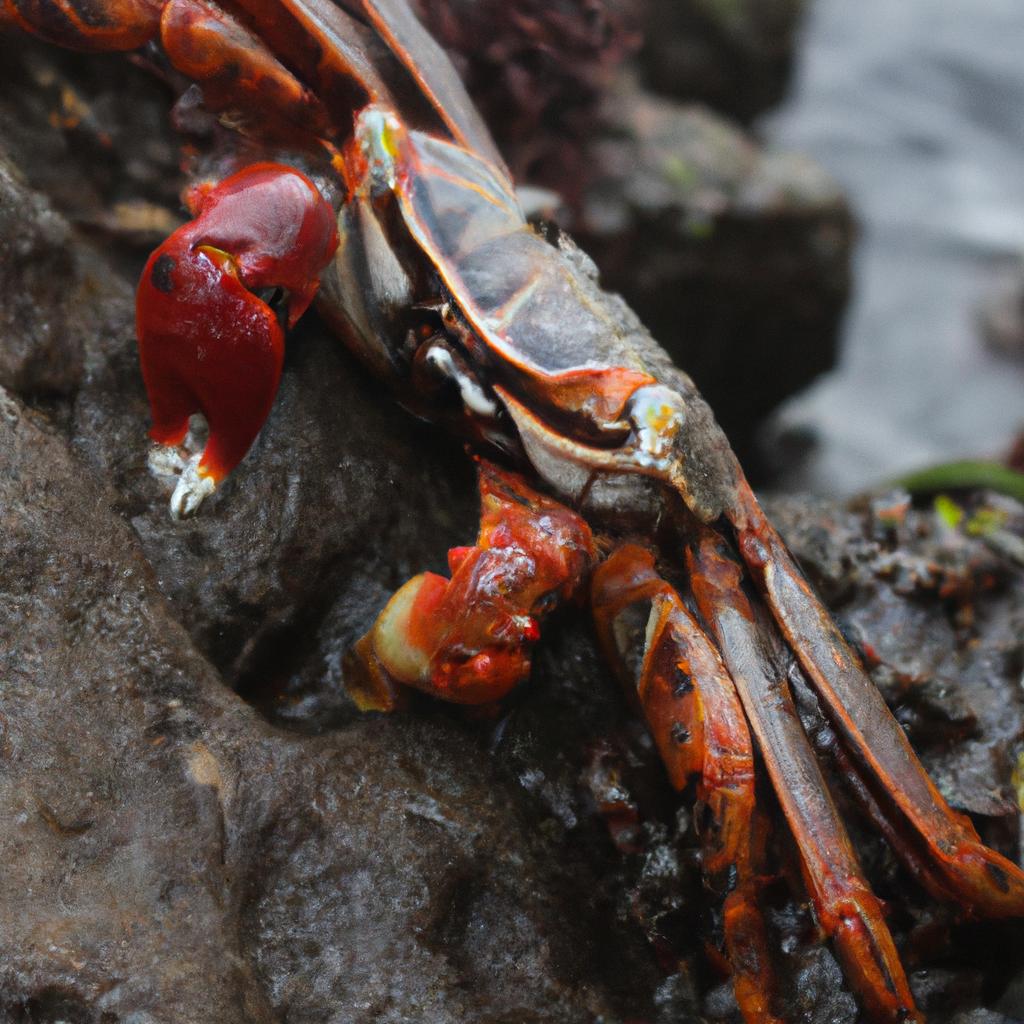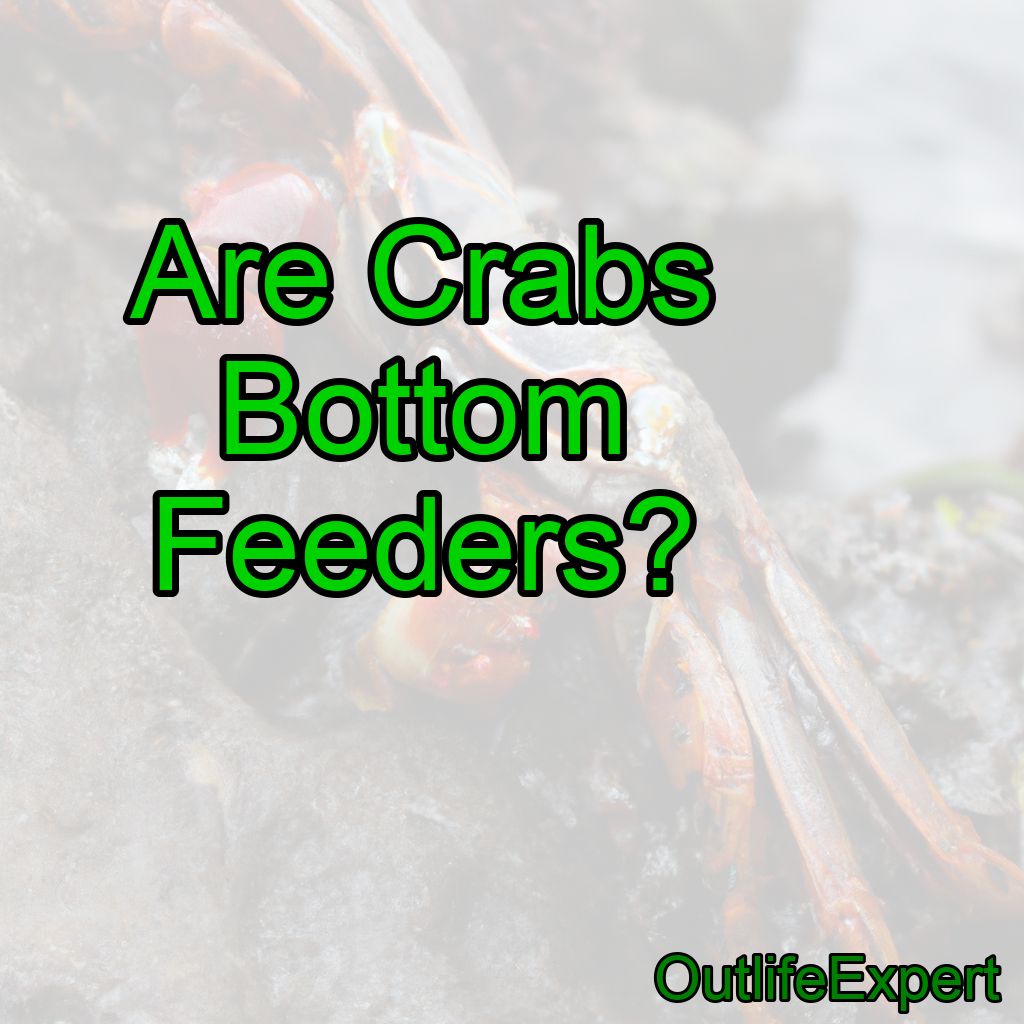As a marine enthusiast and someone who enjoys keeping crabs as pets, I’ve always been curious about their eating habits.
One question that has consistently piqued my interest is:are crabs bottom feeders?cI’ve spent countless hours researching, observing, and learning about the fascinating world of crabs, and now, I’m excited to share my findings with you.
The short answer is: yes, crabs are bottom feeders.
However, they are not exclusively so. In this blog post, I will delve deeper into the world of crabs, their feeding habits, and their diets.
So grab a cup of coffee, sit back, and let’s explore the captivating world of these crustaceans together.
Contents
What Are Bottom Feeders?
Before we dive into crabs and their eating habits, let’s talk about what bottom feeders are.
A bottom feeder is an aquatic animal that feeds on or near the bottom of a body of water, such as an ocean or lake.
These creatures play an essential role in the ecosystem by consuming dead and decaying organic matter (detritus), algae, and small invertebrates.
Some examples of bottom feeders include catfish, carp, and yes, crabs!
What do bottom feeders typically eat?
Bottom feeders typically eat decaying organic matter, algae, small aquatic animals, and detritus that settles on the bottom of rivers, lakes, and oceans.
Some common examples of bottom feeders include catfish, crabs, carp, and some types of crustaceans.
Crab Anatomy & Adaptations
To understand why crabs are bottom feeders, it’s essential to look at their anatomy and adaptations.
Crabs have a hard exoskeleton that protects their soft bodies from predators.
Their legs are adapted for walking on the ocean floor or burrowing into the sand.
In addition, their powerful claws are used for grasping and tearing apart their food.

Crabs also have a unique mouth structure called a “maxilliped.” This structure helps them sort through and process the food they find at the bottom of the ocean.
These adaptations make crabs well-suited for life as bottom feeders.
The Crab Diet
Crabs are opportunistic feeders, meaning they’ll eat just about anything they can find.
Their diet mainly consists of:
- Algae
- Plankton
- Detritus (dead and decaying organic matter)
- Small invertebrates (such as mollusks and crustaceans)
- Fish
- Carrion (dead animals)
As bottom feeders, crabs play a crucial role in the ocean’s food chain by consuming dead and decaying matter. This helps to recycle nutrients and maintain a balanced ecosystem.
Feeding Habits of Different Crab Species
There are over 6,000 species of crabs, and their feeding habits can vary depending on their habitat and size.
Here are a few examples of different crab species and their feeding habits:
Blue Crabs
Blue crabs are known for their aggressive feeding habits.
They are omnivorous and will eat everything from algae to small fish.
They use their powerful claws to crush the shells of mollusks and other invertebrates, making them efficient bottom feeders.
Hermit Crabs
Hermit crabs are scavengers and will eat a wide variety of organic matter. They often feed on detritus, algae, and small invertebrates found at the bottom of the ocean.
As they grow, hermit crabs will also search for new shells to call home, which occasionally includes the shells of other marine creatures.
Fiddler Crabs
Fiddler crabs have a unique feeding method.
They use their smaller claw to scoop up sediment from the ocean floor and then sift through it to find food particles.
This process is known as “surface deposit feeding.” Fiddler crabs primarily feed on algae, bacteria, and detritus found in the sand.
When Do Crabs Eat?
Crabs are primarily nocturnal creatures, which means they are most active during the night.
This is when they venture out to search for food.
However, some species, such as the fiddler crab, can be observed feeding during the day.
How Often Do Crabs Eat?
The frequency at which crabs eat can depend on factors such as their size, species, and environment.
In general, crabs will eat as often as they can find food.
In captivity, it’s essential to provide a balanced diet for your crab to ensure they remain healthy and active.
Why Crabs Are Important to the Ecosystem
Crabs, as bottom feeders, serve a vital role in maintaining the health and balance of their aquatic ecosystems.
By consuming dead and decaying matter, crabs help recycle nutrients back into the environment.
They also serve as a food source for various predators, including fish, birds, and even humans!
Conclusion
So,are crabs bottom feeders?
Yes, crabs are indeed bottom feeders.Their unique anatomy, adaptations, and feeding habits make them well-suited for life at the bottom of the ocean, where they consume various organic matter, playing a crucial role in maintaining a balanced ecosystem.
As a crab enthusiast, I find it fascinating to learn about and observe these captivating creatures, and I hope you do too!





